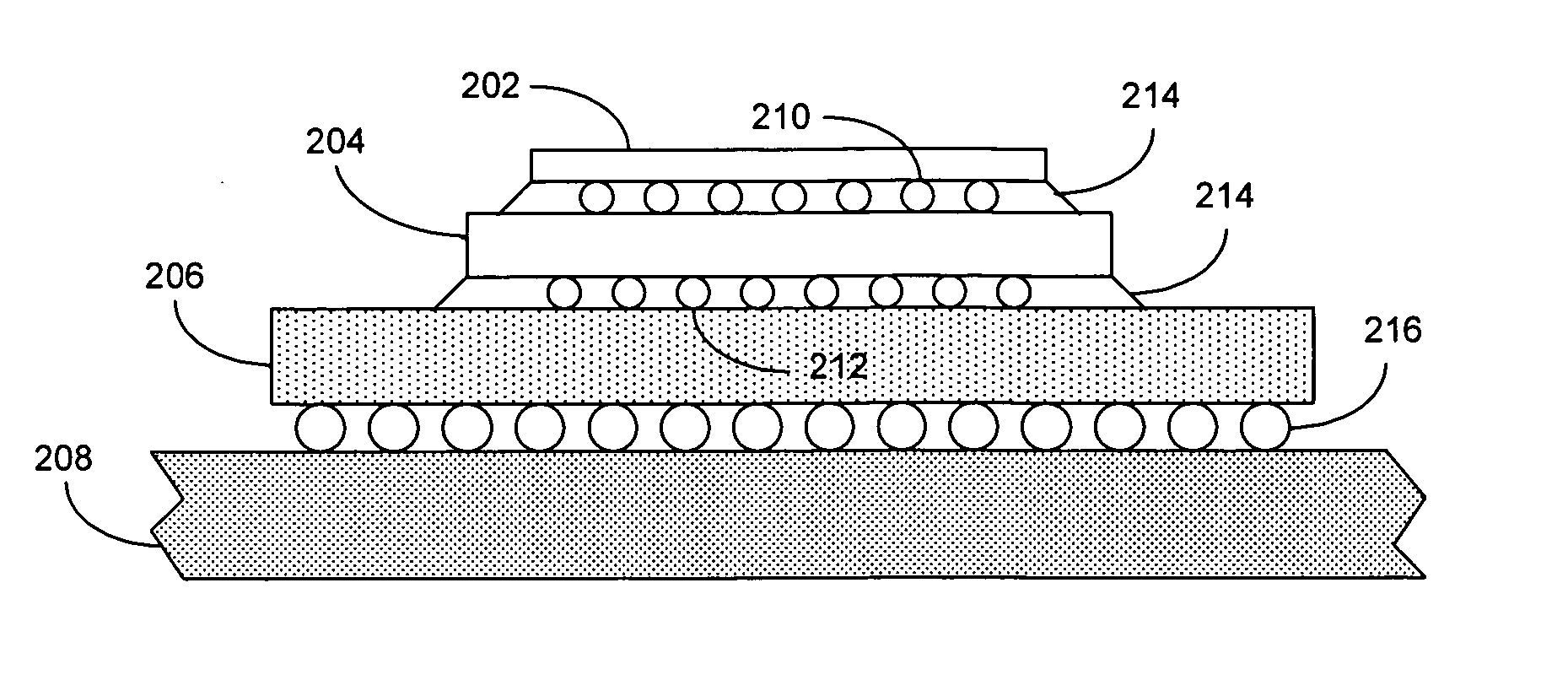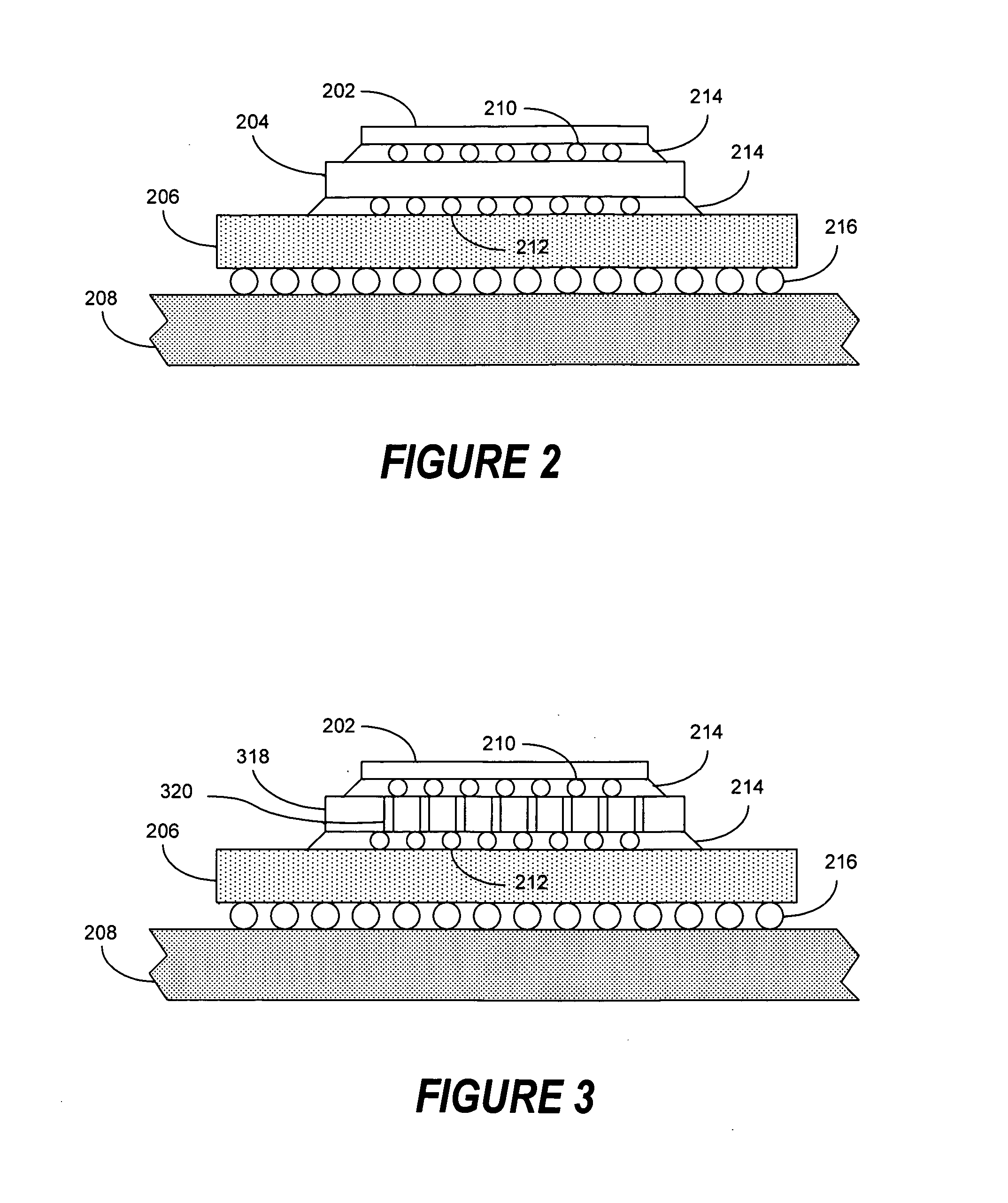Thermal expansion compensation graded IC package
a technology of thermal expansion compensation and ic package, which is applied in the direction of printed circuit stress/warp reduction, printed circuit aspects, printed circuit manufacturing, etc., can solve the problems of thermal expansion difference between the semiconductor device and the circuit board, increase the clock speed, and increase the number of inputs and outputs, so as to achieve the effect of reducing stress
- Summary
- Abstract
- Description
- Claims
- Application Information
AI Technical Summary
Benefits of technology
Problems solved by technology
Method used
Image
Examples
Embodiment Construction
[0037] Although the present invention has been described in detail, it should be understood that various changes, substitutions and alterations can be made hereto without departing from the spirit and scope of the invention as defined by the appended claims.
[0038]FIG. 1 shows a computer system 100 in accordance with an embodiment of the present invention. As illustrated in FIG. 1, computer system 100 includes processor 102, which is coupled to a memory 112 and to peripheral bus 110 through bridge 106. Bridge 106 can generally include any type of circuitry for coupling components of computer system 100 together.
[0039] Processor 102 can include any type of processor, including, but not limited to, a microprocessor, a mainframe computer, a digital signal processor, a personal organizer, a device controller and a computational engine within an appliance. Processor 102 includes a cache 104 that stores code and data for execution by processor 102.
[0040] Processor 102 communicates with ...
PUM
 Login to View More
Login to View More Abstract
Description
Claims
Application Information
 Login to View More
Login to View More - R&D
- Intellectual Property
- Life Sciences
- Materials
- Tech Scout
- Unparalleled Data Quality
- Higher Quality Content
- 60% Fewer Hallucinations
Browse by: Latest US Patents, China's latest patents, Technical Efficacy Thesaurus, Application Domain, Technology Topic, Popular Technical Reports.
© 2025 PatSnap. All rights reserved.Legal|Privacy policy|Modern Slavery Act Transparency Statement|Sitemap|About US| Contact US: help@patsnap.com



